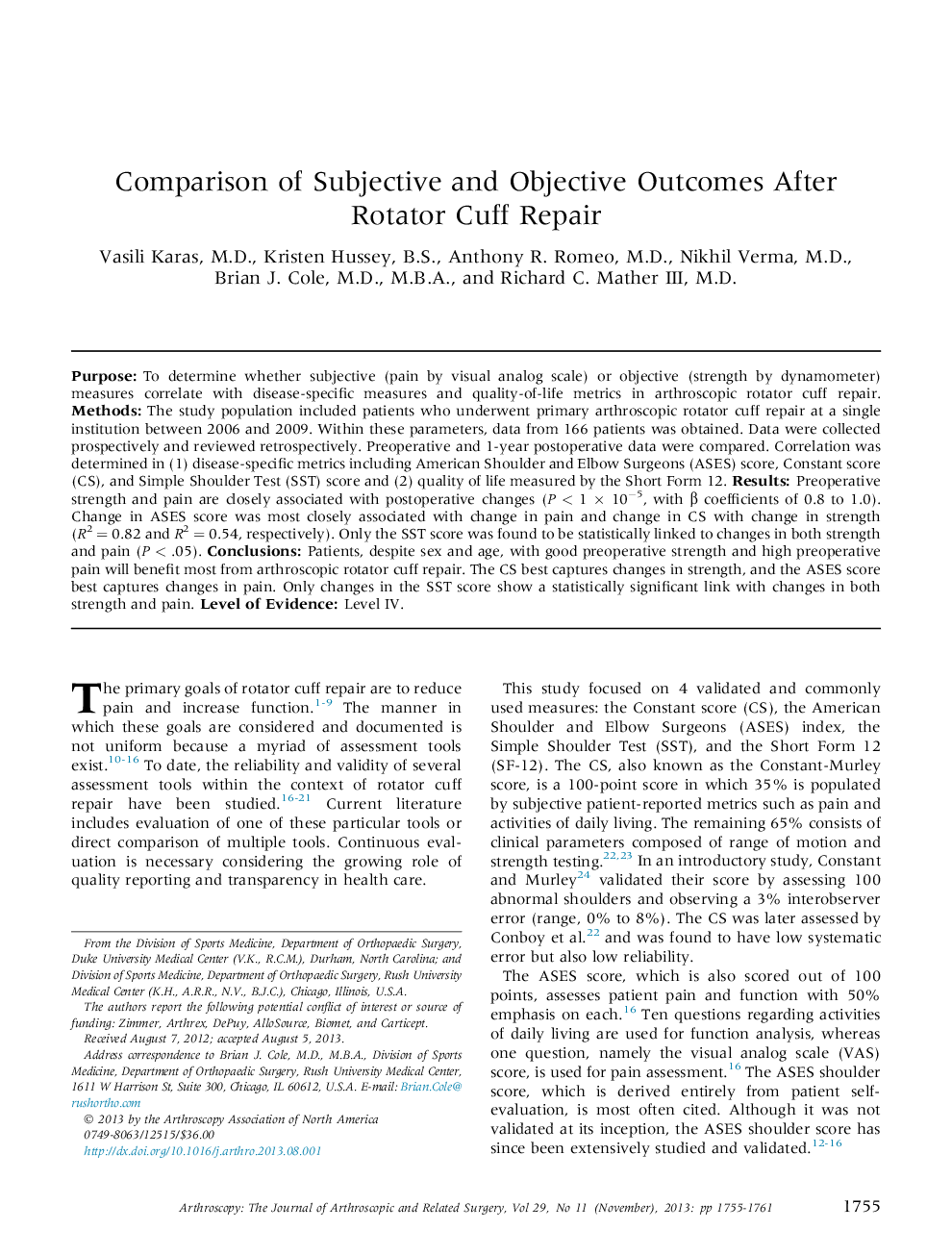| Article ID | Journal | Published Year | Pages | File Type |
|---|---|---|---|---|
| 4043718 | Arthroscopy: The Journal of Arthroscopic & Related Surgery | 2013 | 7 Pages |
PurposeTo determine whether subjective (pain by visual analog scale) or objective (strength by dynamometer) measures correlate with disease-specific measures and quality-of-life metrics in arthroscopic rotator cuff repair.MethodsThe study population included patients who underwent primary arthroscopic rotator cuff repair at a single institution between 2006 and 2009. Within these parameters, data from 166 patients was obtained. Data were collected prospectively and reviewed retrospectively. Preoperative and 1-year postoperative data were compared. Correlation was determined in (1) disease-specific metrics including American Shoulder and Elbow Surgeons (ASES) score, Constant score (CS), and Simple Shoulder Test (SST) score and (2) quality of life measured by the Short Form 12.ResultsPreoperative strength and pain are closely associated with postoperative changes (P < 1 × 10−5, with β coefficients of 0.8 to 1.0). Change in ASES score was most closely associated with change in pain and change in CS with change in strength (R2 = 0.82 and R2 = 0.54, respectively). Only the SST score was found to be statistically linked to changes in both strength and pain (P < .05).ConclusionsPatients, despite sex and age, with good preoperative strength and high preoperative pain will benefit most from arthroscopic rotator cuff repair. The CS best captures changes in strength, and the ASES score best captures changes in pain. Only changes in the SST score show a statistically significant link with changes in both strength and pain.Level of EvidenceLevel IV.
